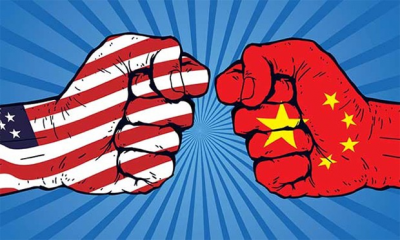China-US “Phase One” Trade Deal: The Devil in the Unannounced Details and Implementation

According to China’s official People’s Daily broadsheet, Beijing and Washington “agreed on the text of a phase one economic and trade agreement based on the principle of equality and mutual respect,” adding:
“The text includes nine chapters: the preface, intellectual property rights, technology transfer, food and agricultural products, financial services, exchange rate and transparency, trade expansion, bilateral assessment and dispute settlement, and the final terms, according to a statement issued by the Chinese side Friday night.”
“Both sides have reached consensus that the US side will fulfill its commitments to phase out its additional tariffs on Chinese products, so as to achieve a switch from hiking to cutting additional tariffs.”
The above remarks omit details of what was agreed on, likely to remain unpublished in full.
According to China’s Vice Commerce Minister/deputy trade representative Wang Shouwen, Beijing will increase imports of US agricultural products — no specific amount agreed on, Wang adding:
The US pledged to eliminate duties on Chinese imports “phase by phase, (its) tariffs undergo(ing) a change from going up to going down.”
Beijing’s Vice Minister of Finance Liao Min said eliminating US tariffs on Chinese products is the “core concern” of its government.
A statement by Trump regime trade representative Robert Lighthizer said the following:
The US and China “agree(d) on a phase one trade deal that requires structural reforms and other changes to China’s economic and trade regime in the areas of intellectual property, technology transfer, agriculture, financial services, and currency and foreign exchange,” adding:
China “commit(s) (to) make substantial additional purchases of US goods and services in the coming years” — no amounts in dollars or quantity mentioned.
US 25% tariffs on around $250 billion worth of Chinese imports remain unchanged, 15% US duties on another $120 billion worth of Chinese goods cut to 7.5%.
New 15% US tariffs on another $156 billion worth of Chinese imports scheduled for December 15 are suspended. Trump tweeted:
“We will begin negotiations on the phase two deal immediately, rather than waiting until after the 2020 election.”
Barron’s claimed unexplained phase one “details weren’t as important as what the agreement stopped from happening.”
Perhaps it’s so for the short-term, the devil in them and what follows in further talks key to the US and Chinese economies and how markets will react in the weeks and months ahead.
Wall Street Journal editors said Friday’s announced phase one one deal “isn’t VE Day, but it’s still welcome economic news,” calling it “modest,” adding:
What’s agreed on in principle are “merely promises,” fulfillment another matter entirely, notably by the US side, viewing China as a threat to its hegemonic aims.
Beijing’s Vice Minister of Commerce Wei Jianguo struck a positive note, saying:
“The trade war has taught the US a lesson. They finally realize that engaging in a prolonged trade war will bring no good, and that ending it as soon as possible is their best option.”
Beijing-based Chinese Academy of Social Sciences analyst Gao Lingyun warned that what’s agreed on in principle hangs in limbo. Major bilateral differences on trade and other issues remain unresolved.
According Chinese government advisor Shi Yinhong said momentum in talks “for the time being” doesn’t dispel longterm confrontation.
“It just pushes the difficulties into the future. And the future could be very quick to materialize because Trump is a very volatile person.”
China knows the US side can change things any time for any reason because of uneasy bilateral relations.
A phase one signing date hasn’t been announced, nor where it will take place and who’ll represent both countries.
Chinese purchases of US products are likely to depend on internal needs, its contractural import arrangements with other countries, whether the Trump regime fulfills its obligations, and its other policies toward Beijing.
Clearly, bilateral relations are greatly strained, trade one of many areas of disagreement, including Sino/Russian unity, the US considers a strategic threat.
It represent a vital counterforce against US rage for unchallenged global dominance by whatever it takes to achieve its objectives.
It’s why unthinkable nuclear war is ominously possible, Sino/US trade relations a minor issue by comparison.
*
Note to readers: please click the share buttons below. Forward this article to your email lists. Crosspost on your blog site, internet forums. etc.
Award-winning author Stephen Lendman lives in Chicago. He can be reached at [email protected]. He is a Research Associate of the Centre for Research on Globalization (CRG)
His new book as editor and contributor is titled “Flashpoint in Ukraine: US Drive for Hegemony Risks WW III.”
http://www.claritypress.com/LendmanIII.html
Visit his blog site at sjlendman.blogspot.com.

